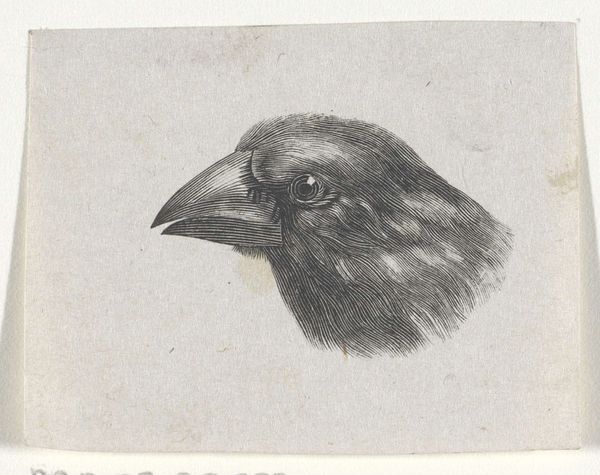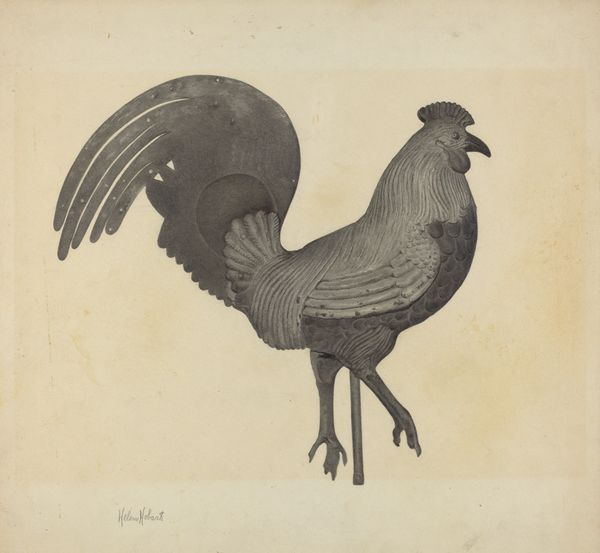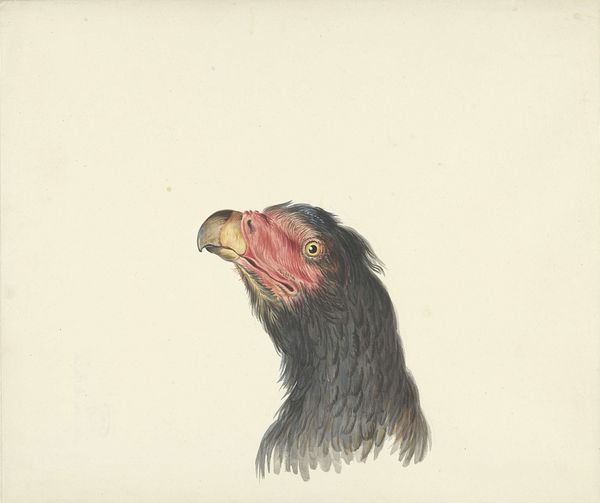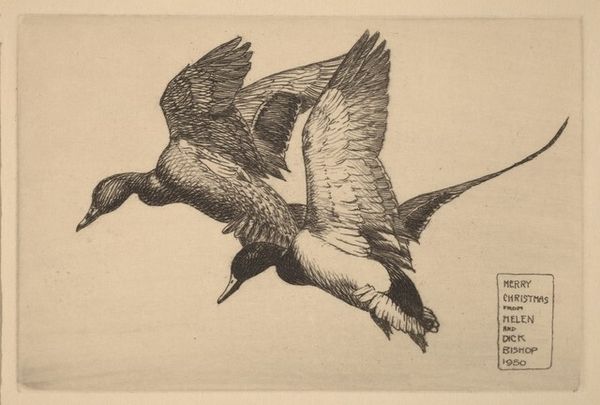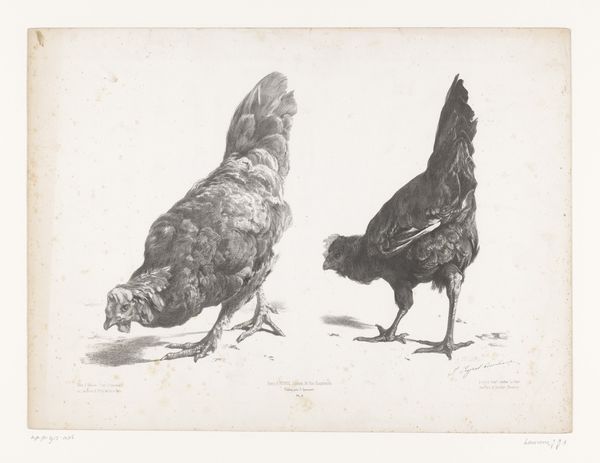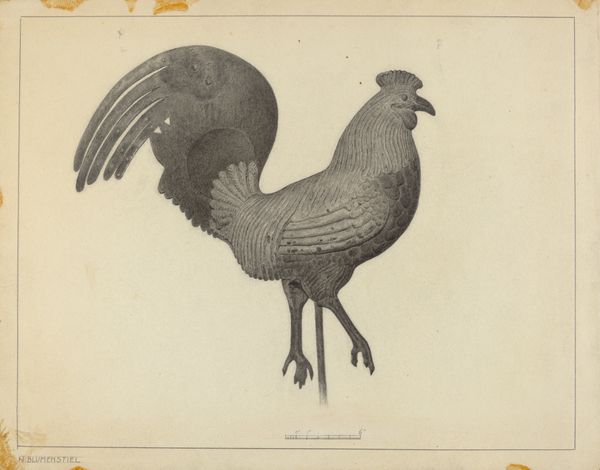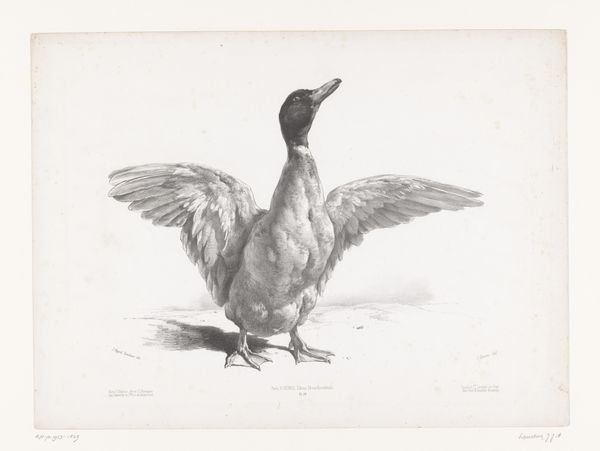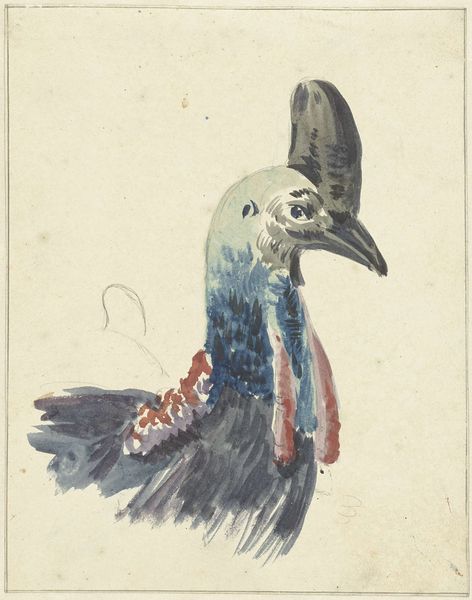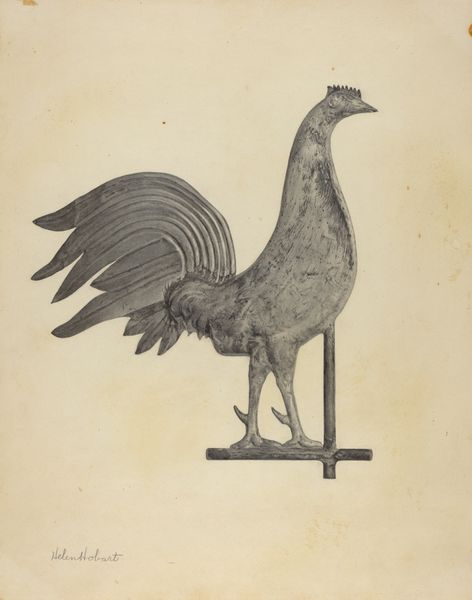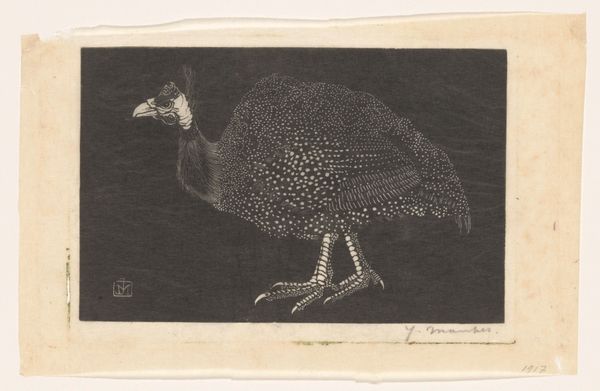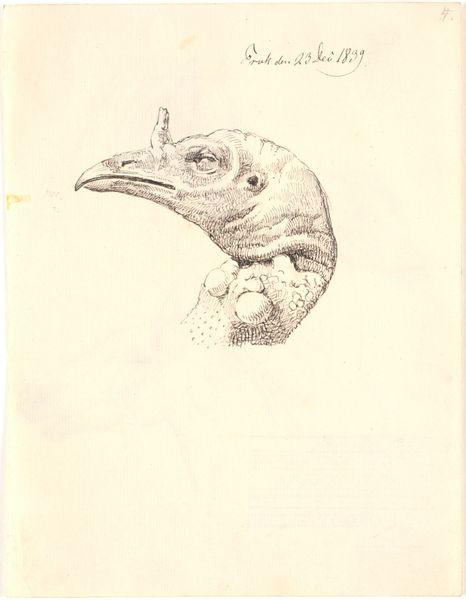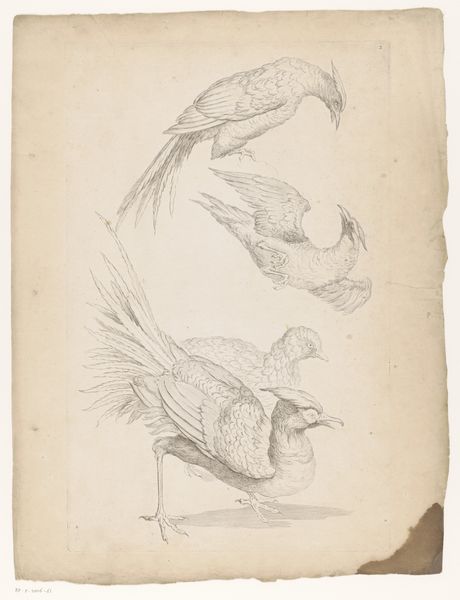
drawing, pencil
#
portrait
#
pencil drawn
#
drawing
#
pencil sketch
#
bird
#
pencil
#
pencil work
Dimensions: height 90 mm, width 112 mm
Copyright: Rijks Museum: Open Domain
Curator: Let's consider this detailed pencil drawing entitled "Vogelkop (mogelijk een fazant)", or "Bird's Head (possibly a pheasant)", attributed to Evert Schippers, and dated between 1856 and 1935. Editor: The gaze of that bird pierces right through me! There's a startling clarity in its eye; and that strange feathered crest! It's rendered with such delicate intensity… haunting, somehow. Curator: Indeed, Schippers masterfully uses pencil to capture the bird's essence. These works, particularly those focusing on fauna, often played a vital role in scientific documentation and colonial observation during that era. Editor: Ah, a kind of detached record, pinning down something 'exotic' and categorizing it. But look closely. There's also tenderness, an artist's curiosity, it’s like trying to catch a fleeting, wild beauty before it vanishes. That head plume reads to me like a flamboyant question mark. Curator: It speaks to the ambivalence of the colonial gaze itself. It reflects both a desire to control and a sense of wonder at the natural world. Schippers presents a subject devoid of landscape, devoid of context: effectively an artifact. Editor: Removed, yes, but vividly alive, too! You sense the creature's weight, its avian tension; the whole drawing pulsates with an untapped energy. What seems 'objective' is incredibly intimate. Like catching someone mid-thought. Curator: Considering its production date, we must acknowledge the scientific conventions of the time—the emphasis on accurate representation aligning with the rise of natural history museums and the organization of knowledge. Editor: And the artist’s individual touch that pushes beyond dry cataloguing! Its vulnerable intensity whispers across the ages. A potent collision of control and the uncontrollable wildness inside a single creature. That's a magic trick. Curator: The artwork encourages reflection on how we frame our understanding and depiction of nature, acknowledging the layered political histories ingrained in these very aesthetic traditions. Editor: Yes, and even further: an understanding of ourselves and of others! I now see, in this bird's singular and captivating portrait, the heart of its mystery reflected in ours.
Comments
No comments
Be the first to comment and join the conversation on the ultimate creative platform.
